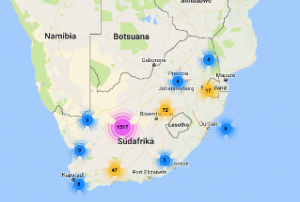A general term for temperature variations above (extreme heat) or below (extreme cold) normal conditions (IRDR Glossary).
Since climate varies regionally, the definition of an extreme temperature and its threshold will differ from location to location. In other words, an extreme value in one location may be within the normal range in a different location (WMO).
A simple method is to establish a specific threshold for temperature and extreme precipitation events and evaluate the extremes that occur over (or under) that given threshold. Another common mean of ascertaining thresholds is based on selecting the tail of distributions for temperature and precipitation. Statistical partitions such as by quartiles or percentiles of the distribution have provided a means for evaluating extremes (WMO).


